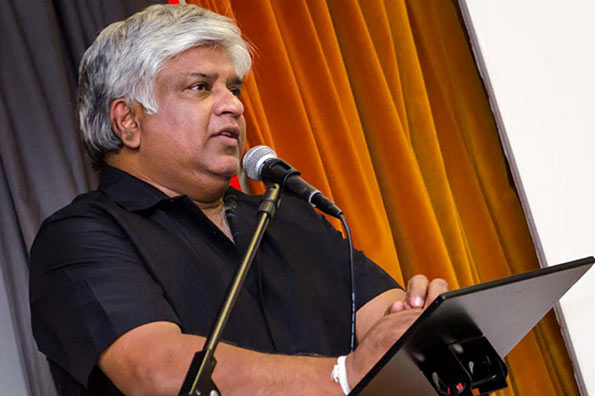Sri Lanka stops import of Iranian oil ahead of sanctions

Sri Lanka has stopped crude imports from Iran and is actively switching to other crude grades, as South Asian importers, including India, significantly restrict supply in anticipation of US sanctions against Tehran.
“We stopped as soon as the sanctions were announced. We didn’t buy [directly] from Iran. We buy from Singapore, Dubai, Fujairah,” Sri Lankan petroleum resources development minister Arjuna Ranatunga told reporters in Fujairah.
“We’re looking at signing government-to-government agreements over the next couple of months. We’re looking at long term agreements,” he added.
Sri Lanka, one of the smaller South Asian consumers of oil, was importing nearly all of its 50,000 barrels per day from Iran, which was then refined at the country’s sole refinery built to run on light crude imported from the Middle Eastern producer.
Following the threat of snapback sanctions against Tehran by the White House, Sri Lanka’s state oil company had earlier mulled paying for its oil imports and debts with tea. Sri Lanka is the world’s second-biggest producer of the commodity, behind Kenya. Iran, a big consumer of tea, imports 90 per cent of the commodity from India and Sri Lanka.
Colombo, however, is close to securing alternative supplies from other producers to ensure it didn’t fall afoul of sanctions, said Mr Ranatunga.
“We have identified a couple of crude [grades] and we have already started using them. That is one of the problems we have because the crude is very expensive as well. So we’re looking at [securing] cheaper crude and we’re very successful at that,” he said.
Sri Lanka drew up contingency plans in 2012 to import oil from Saudi Arabia and Oman, when nuclear-related sanctions were imposed on Tehran.
Mr Ranatunga declined to comment on where Sri Lanka is currently importing crude from.
The country is still on track to expand capacity at its Sapugaskanda refinery to 110,000 bpd, a scheme that was earlier planned to be developed by Iran, said the minister. But finding a replacement is expected to take up to four years, he said.
“We’re looking at 110,000 to 125,000 bpd capacity, and we need the 110,000 bpd by 2025,” he told reporters.
The refinery, which is expected to cost $500 million, has received nearly five proposals, from companies in China, South Korea, the Middle East and Singapore.
Sri Lanka, which announced a licensing round earlier this year, has signed an agreement with US energy services firm Schlumberger and is in discussions with French energy major Total regarding gas exploration, said Mr Ranatunga.
The country has offered the Mannar and Dorado basins off its western coastline for gas exploration.
The licensing round will close next month, with preliminary results indicating potential for up to 1.8 trillion cubic feet of gas, said Mr Ranatunga.
Full-scale exploration after data analysis will take another six years, he added.
Sri Lanka meets its oil requirements through imports alone. However, the end of its 25-year long civil war with the separatist Liberation Tigers of Tamil Eelam in 2008 has revived interest in developing its own oil and gas resources.
(The National)

Latest Headlines in Sri Lanka
- COPE uncovers irregular NMRA certification process March 14, 2025
- Anuradhapura Hospital Director removed following doctor’s assault March 14, 2025
- Popular rapper Shan Putha arrested with firearm March 14, 2025
- Batalanda commission report tabled in Sri Lankan Parliament March 14, 2025
- Female Grama Niladharis withdraw from night duty over security concerns March 14, 2025


